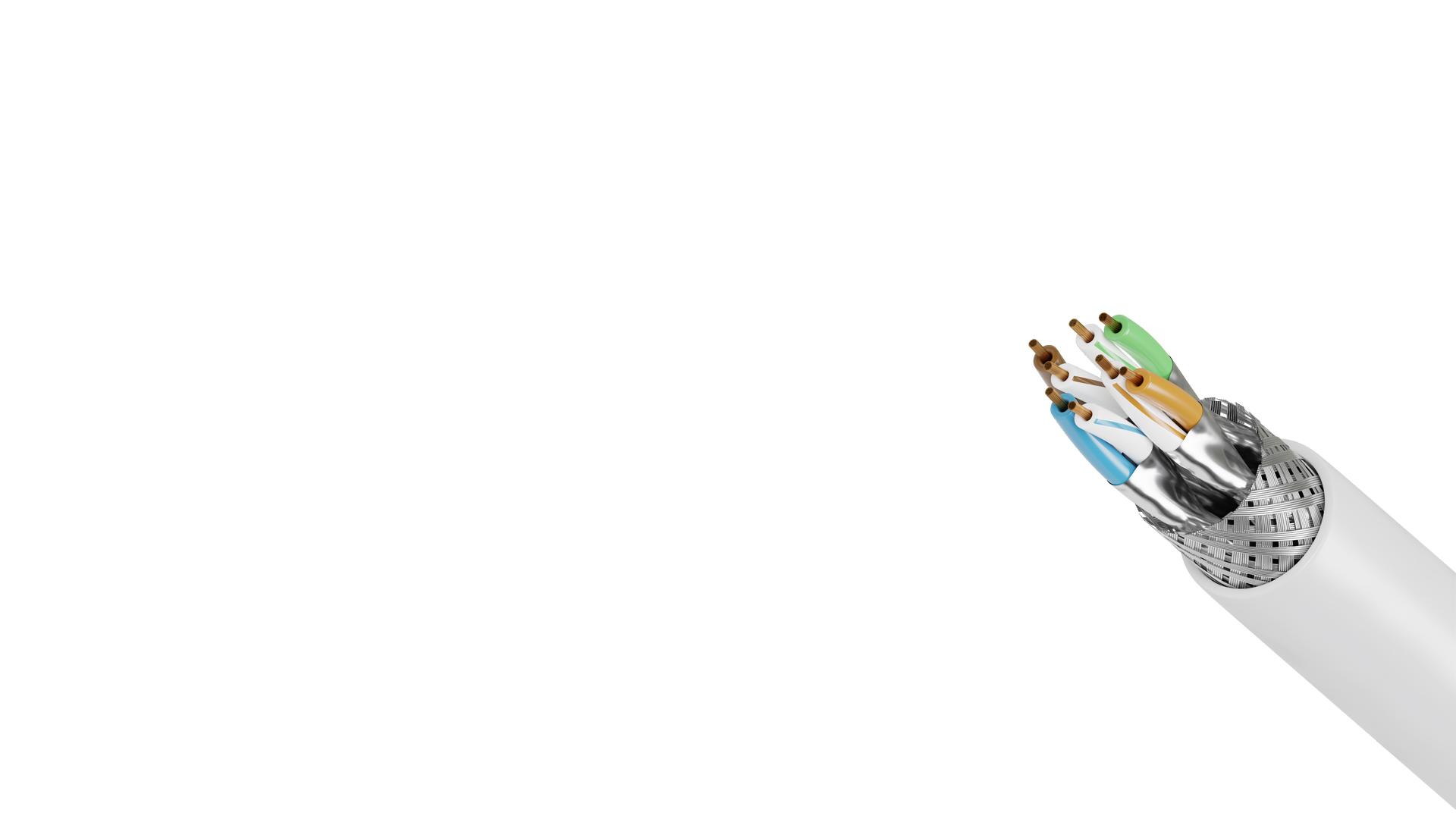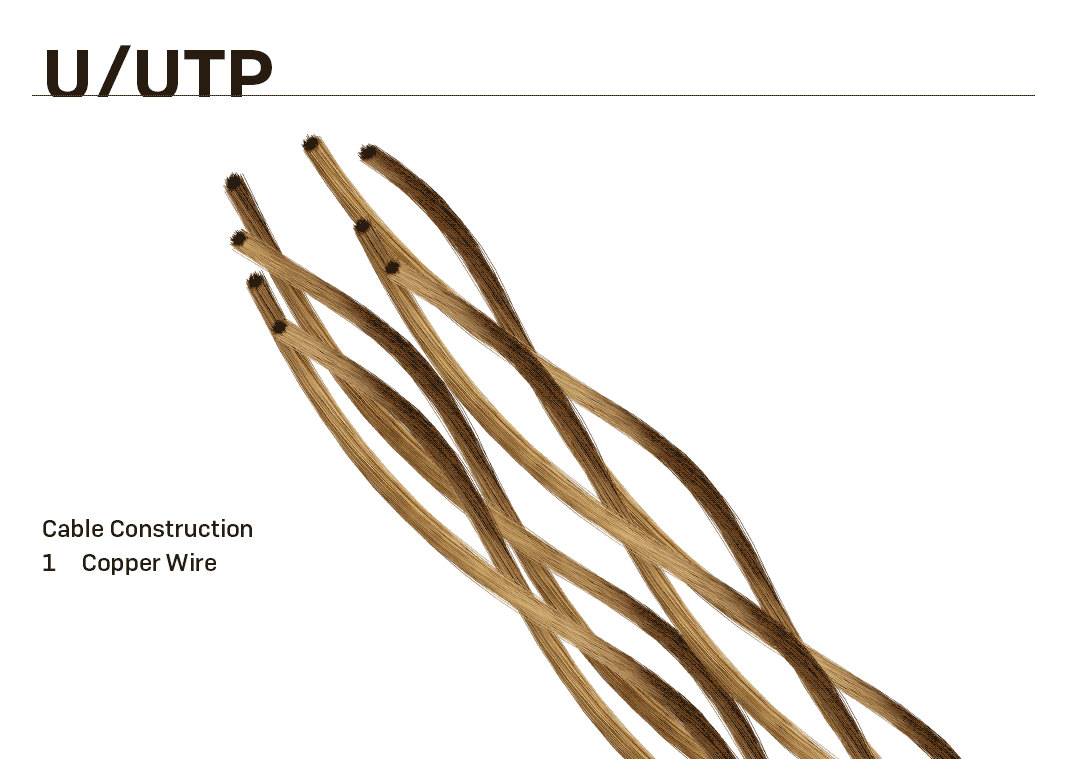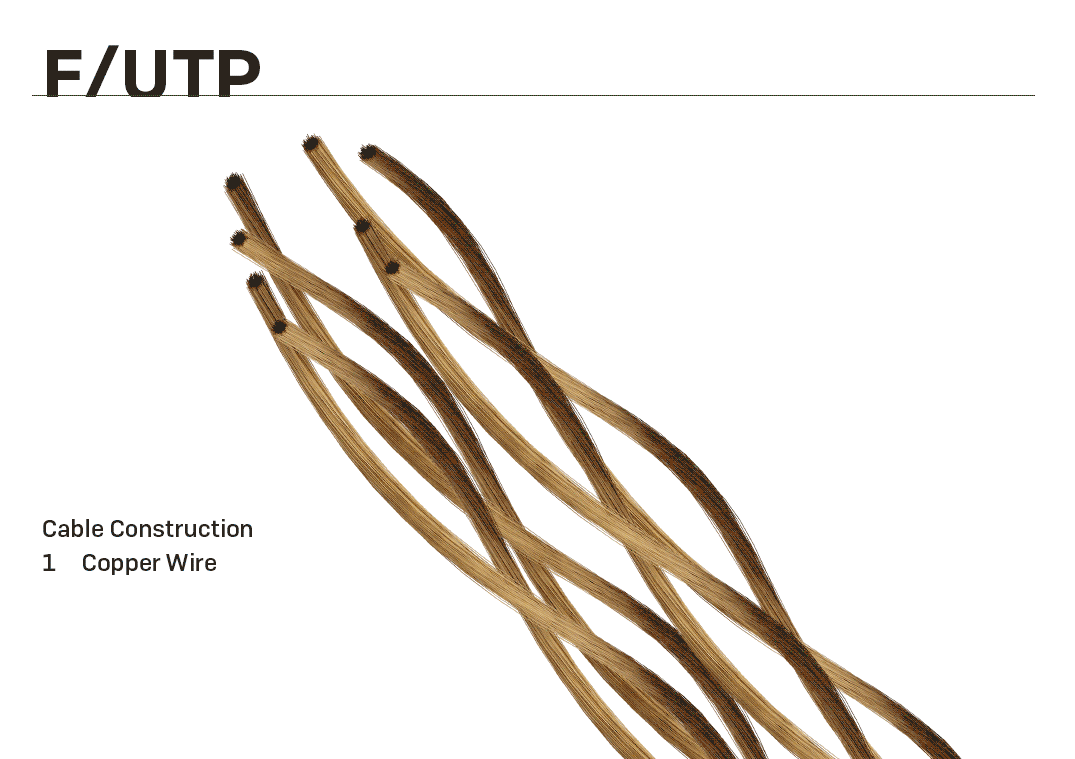
CABLE CONSTRUCTION
NETWORK CABLES & THEIR SHIELDING TYPES
Twisted pair cables generally consist of four pairs of wires twisted together. The twisting serves to minimize the parasitic capacitance, which otherwise impairs the transmission quality of a cable, especially in high frequency bands with high signal attenuation values when the wire pair are parallel to each other.
The four wire pairs are also stranded together in the cable to minimize near and far crosstalk between the pairs (NeXT and FeXT). This cable bundle is called the cable core and is covered by the cable sheath. Depending on the type of shielding, the individual wire pairs or the cable core (or both, or none) are surrounded by a metal foil or a braided shield.

Nomenclature of shielding
Before the clear standardisation by ISO/IEC11801, the designations for shielding types were not uniform and caused some confusion in the market. This standard introduced the following designation scheme.
For example: S/UTP for a TP cable with braid as total shield but without single shield, or SF/FTP for TP cable with braid and foil as total shield and foil as single pair shield.
Screening
A conductive ground connection that surrounds the cable core (overall shielding) or individual wire pairs (single shielding) normally significantly improves the signal quality in terms of interference immunity and radiation, interaction with other lines, as well as the eavesdropping security of a transmission path. At the connectors, this shield is then connected to the metallic connector housing, which establishes the ground connection via the device socket. Without shielding, this connection does not exist due to the galvanic isolation caused by the isolating transformers used in network technology.
The general rules of shielding are the more, the denser, the more effective. The shielding of individually wired pairs also has clear and measurable positive effects here. Which is why some of the higher cable categories (e.g. Cat.7) with their high data rates also require cables with individual and overall shielding. Nevertheless, in the lower categories Cat.5e and Cat.6 completely unshielded cables are traditionally used.
Unshielded Twisted Pair
Unshielded/Unshielded Twisted Pair – a completely unshielded cable, which is still often used for the lower cable categories Cat.5 and Cat.6 This means that they are usually sufficient for the transmission methods of networks up to Gigabit Ethernet, even if they are not optimal. However, in some cases it may be better to use unshielded cables.
Firstly, if there are large voltage potential differences between the end points of the reference potential and the network devices used are themselves connected to earth or ground potential via the PE contact of the power supply cable, a secondearth connection and an earth loop is created.
It generates low-frequency compensation currents via the cable shield, which considerably impair the signal quality. Second, some AV or USB extender systems that use Cat.X cables are more dependent on good crosstalk than good shielding and therefore work better with unshielded cables.
Since this type of cable can work without shielding and meet the requirements for its category, its NeXT and FeXT are usually much better. To achieve this, its wire pairs are often spatially separated by special plastic spacers within the cable sheath.
Foiled Unshielded Twisted Pair
An F/UTP cable is made up of a U/UTP cable core wrapped in a foil screen made of mostly aluminium laminated plastic foil. For a long time this shielding type was the most frequently used and is more than enough for Cat.5 and Cat.6 cable categories and for transmission standards up to Gigabit Ethernet, while significantly optimising the signal quality compared to U/UTP cables.
Screened Foiled Twisted Pair
This shielding type with braided shielding around the cable core and foil shielding around the individual wire pairs is sometimes referred to as PiMF cable (Pair in Metal Foil). It represents the strongest shielding and must be used for some cable categories (Cat.7, Cat.7A and Cat.8.2).
The wire mesh of the overall shield should have a coverage of more than 30% in order to achieve enough shielding against the typically low-frequency (and long-wave) interference.


